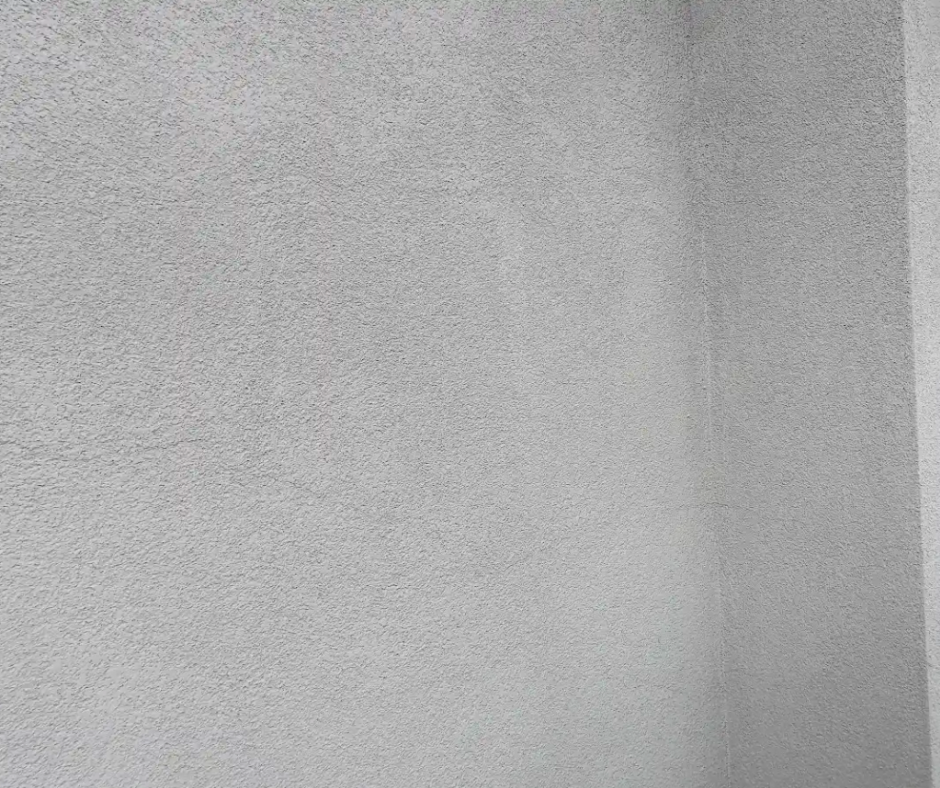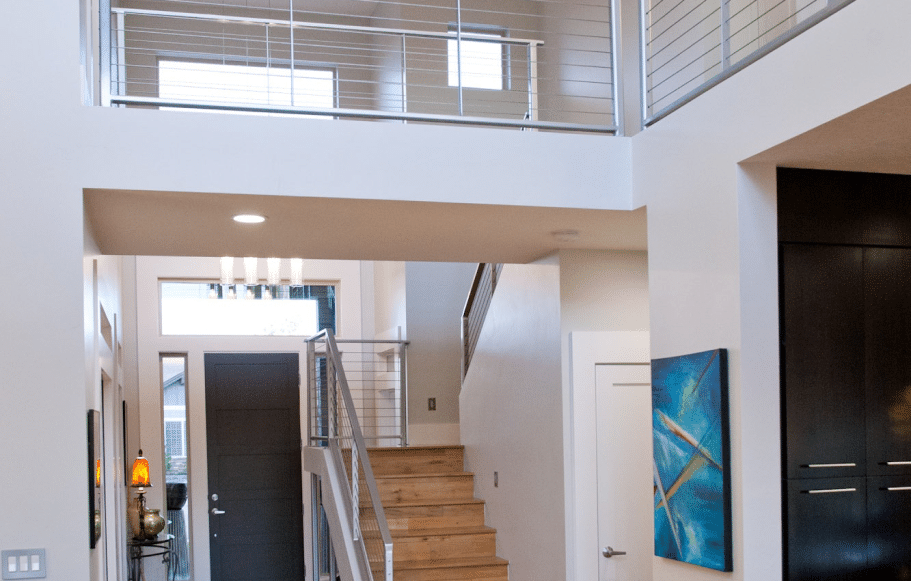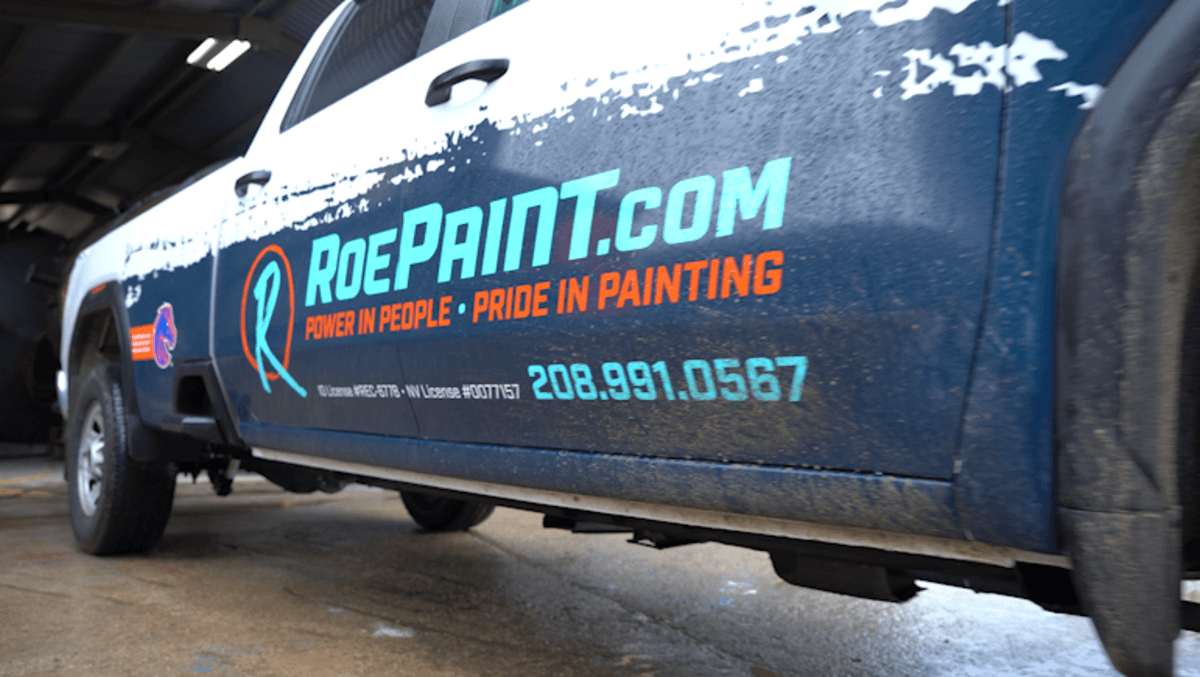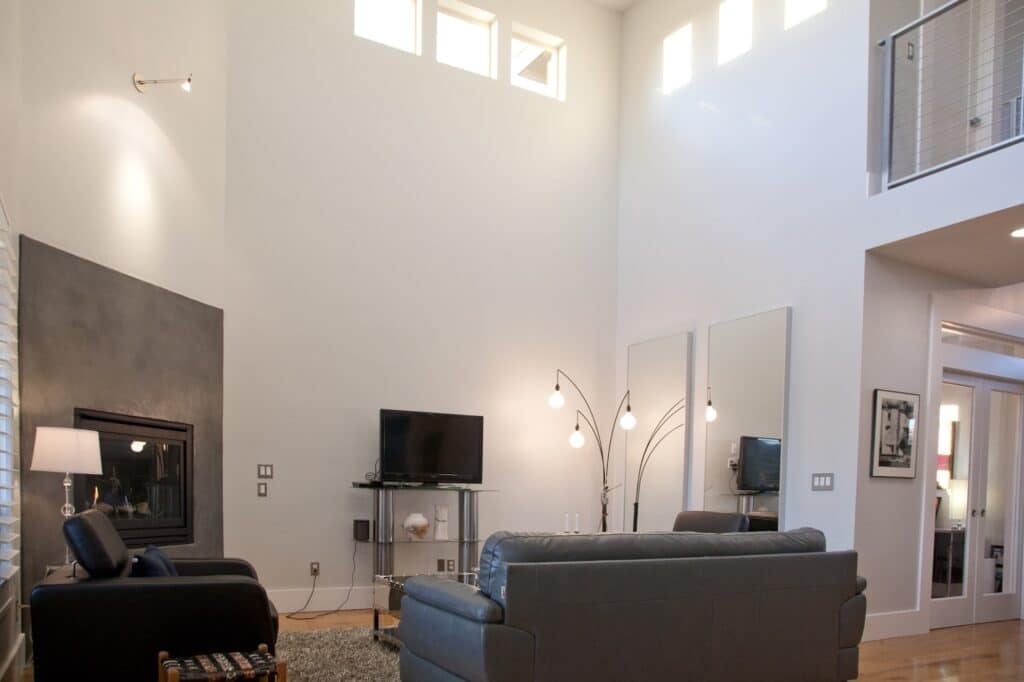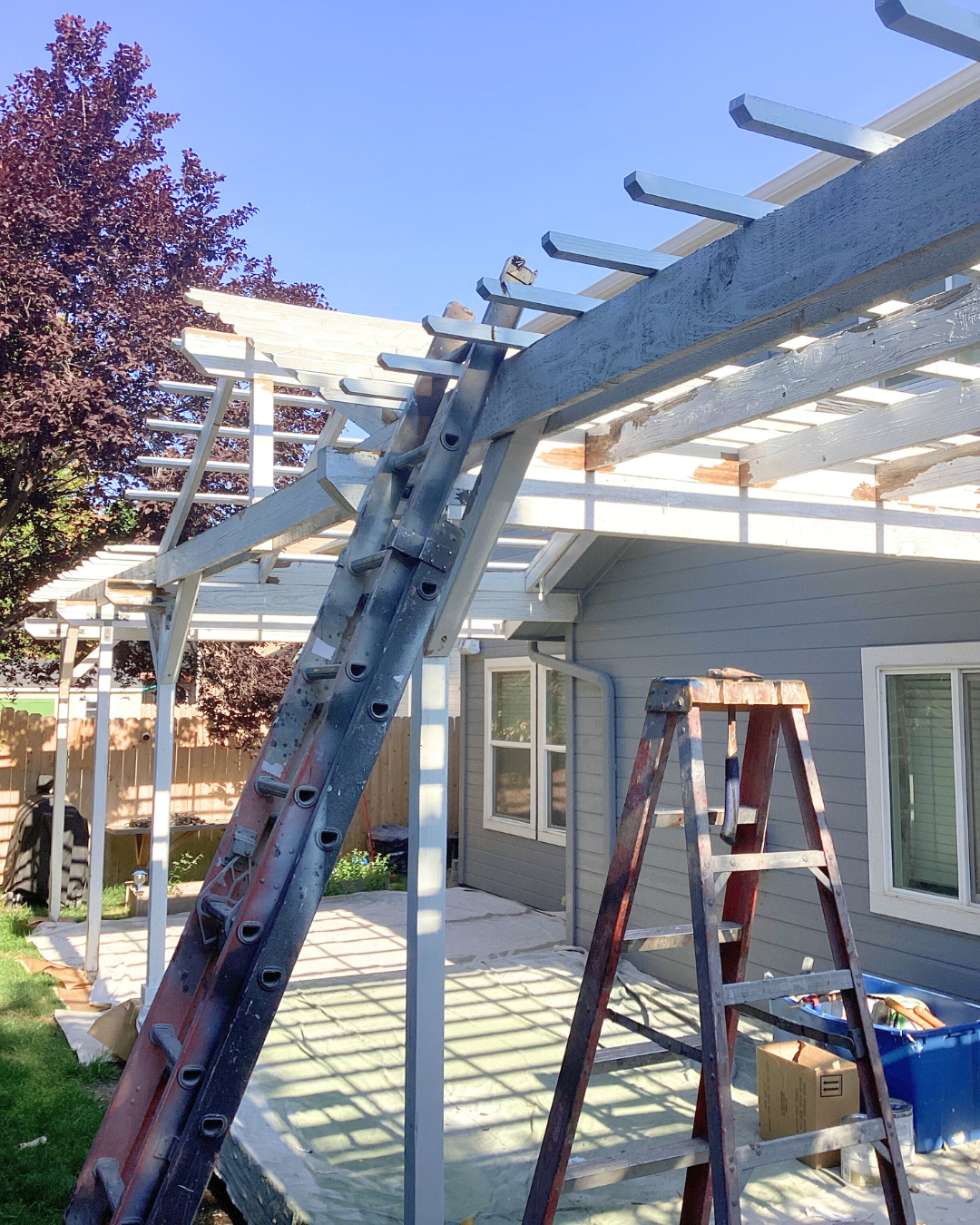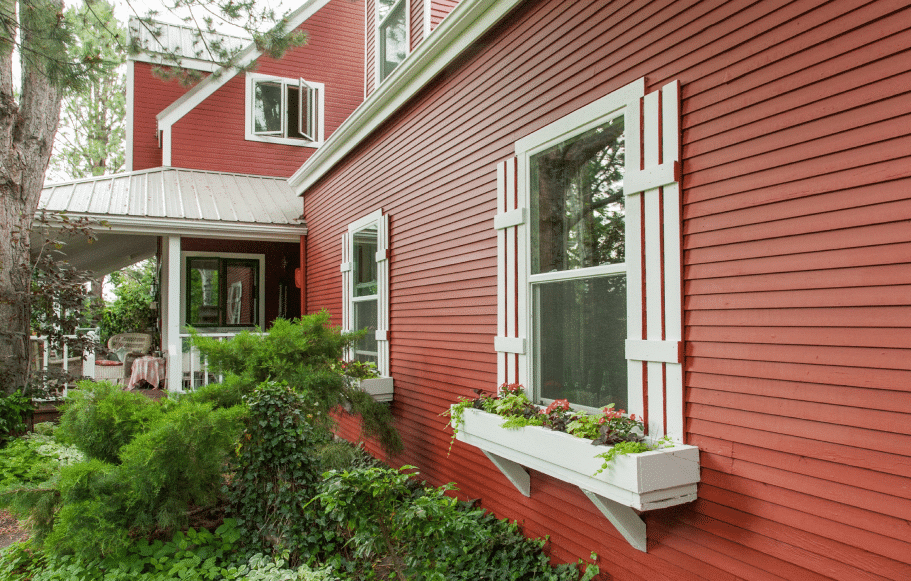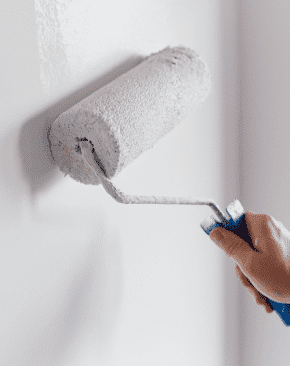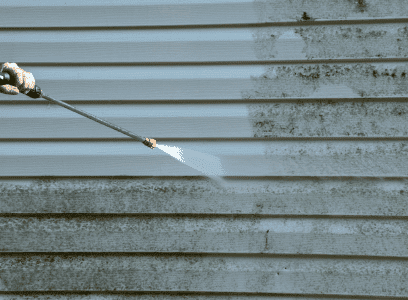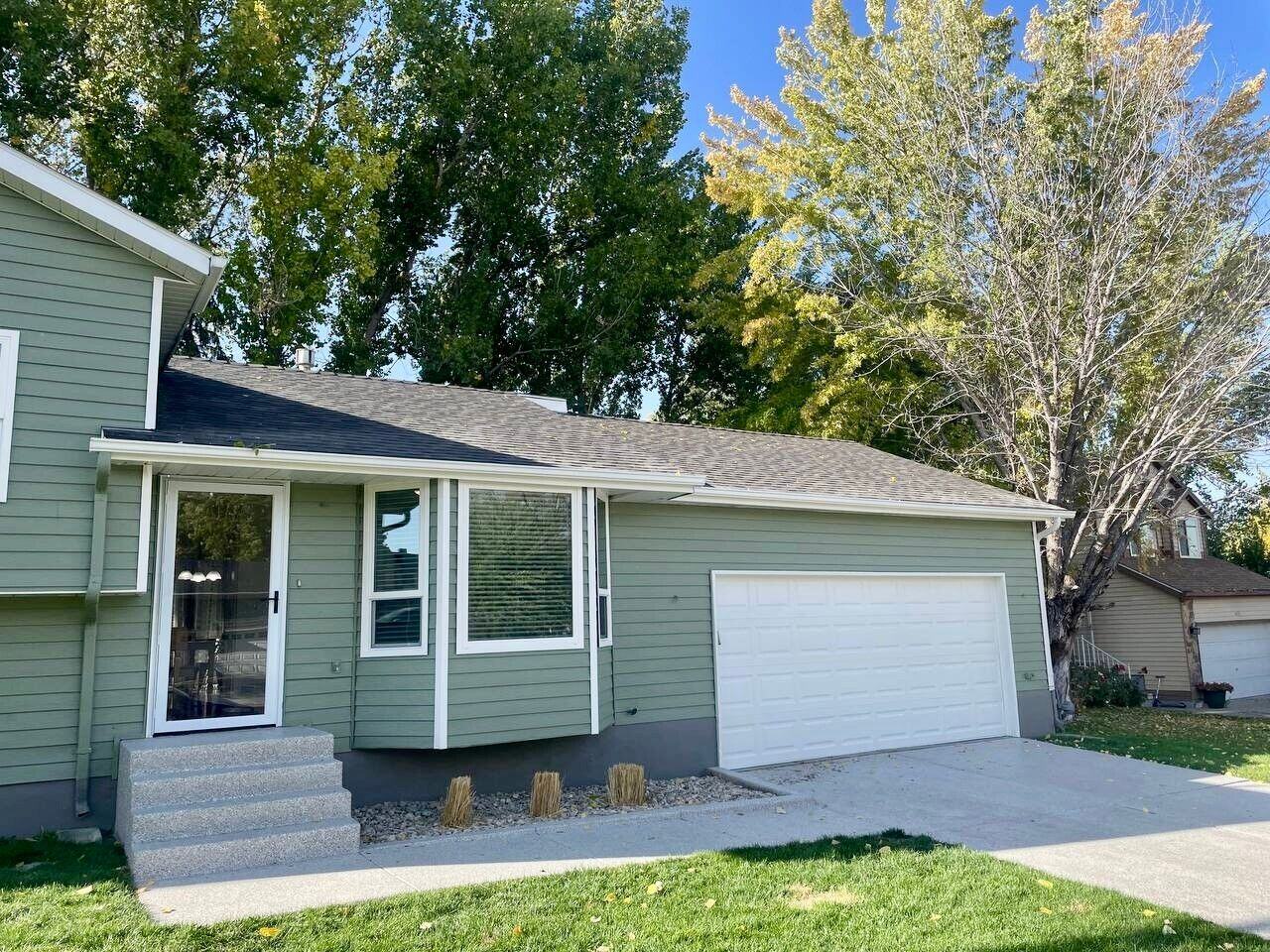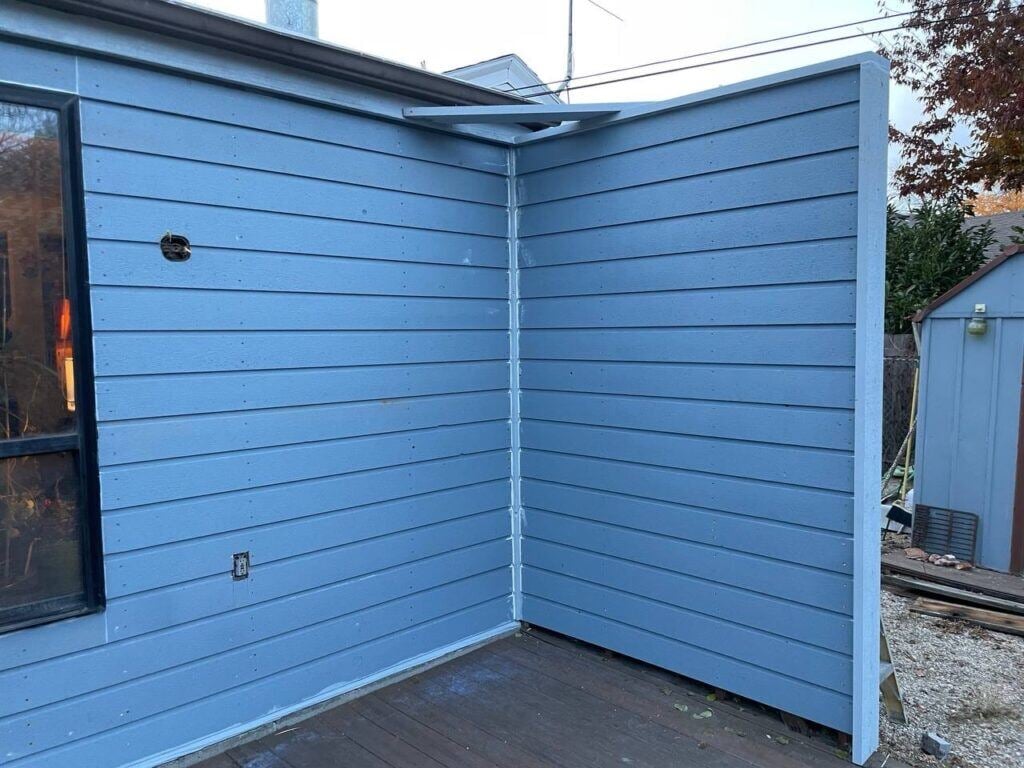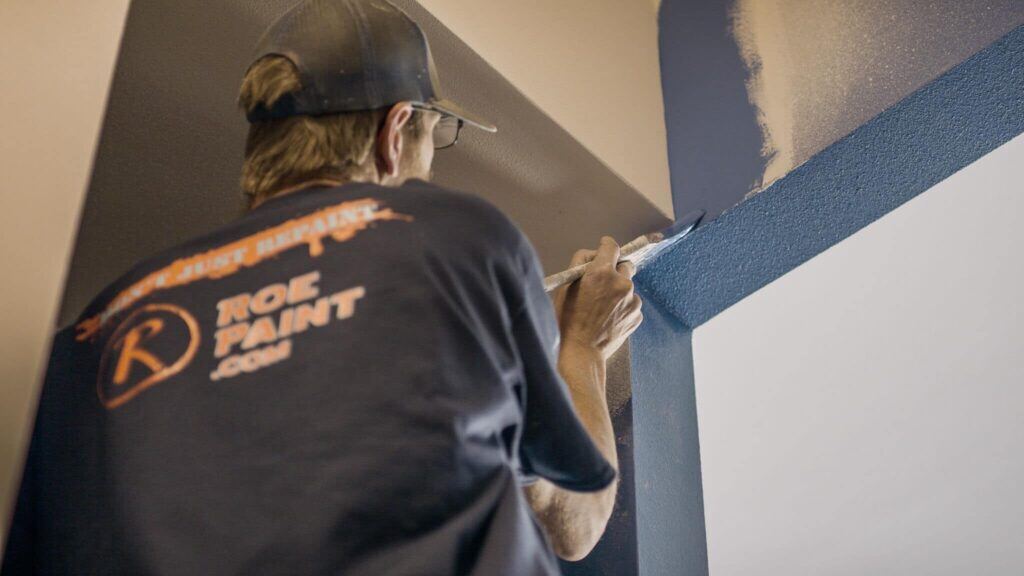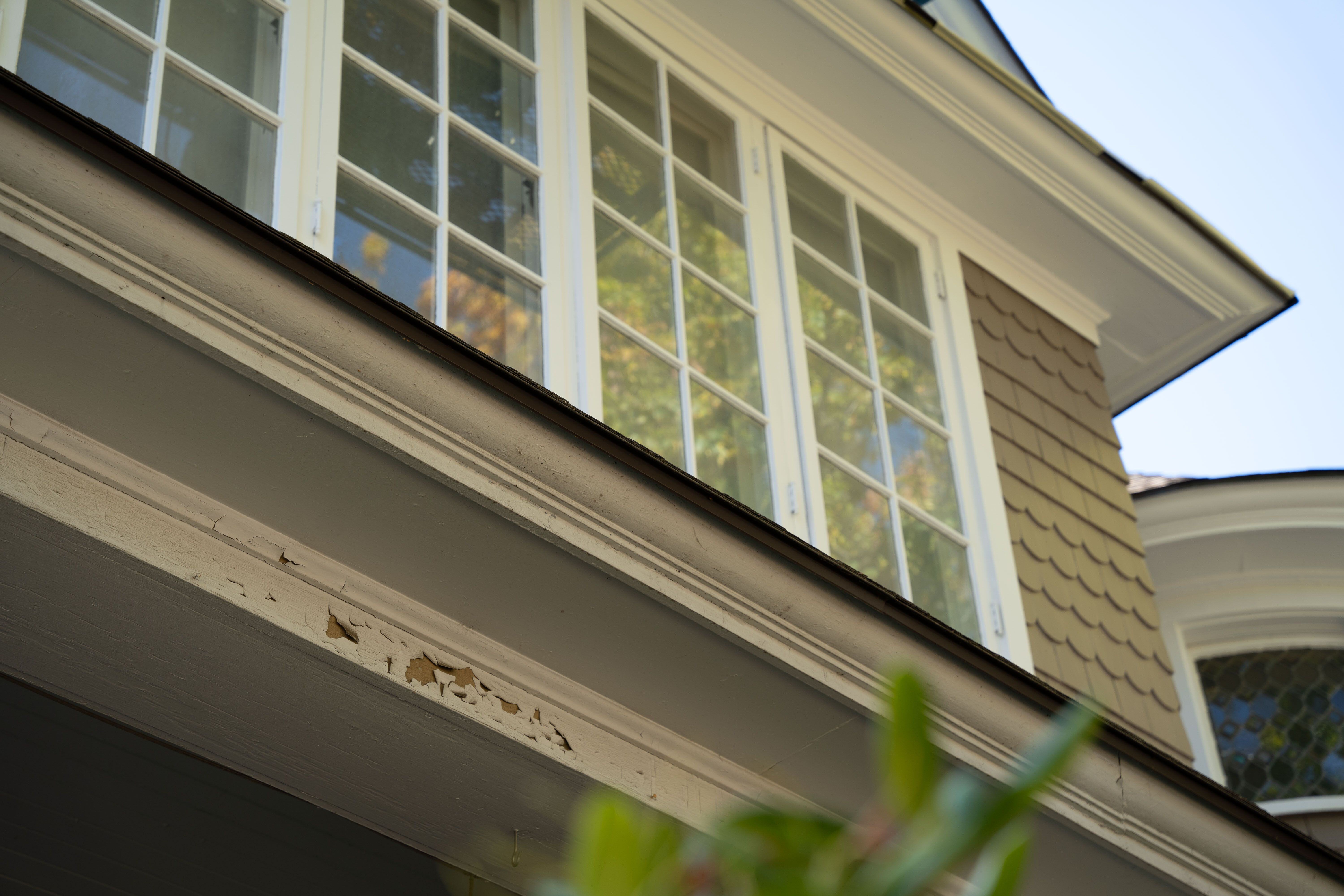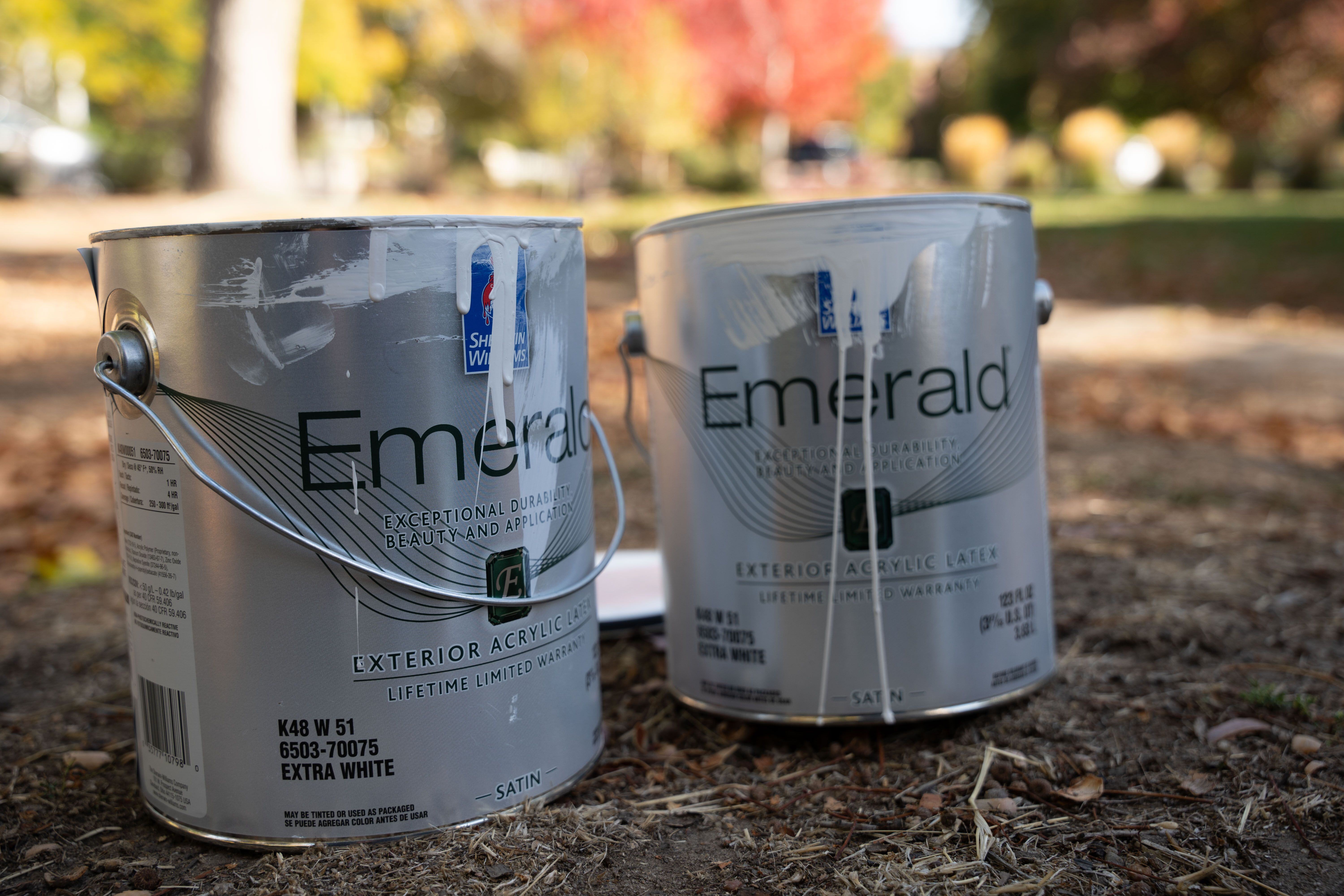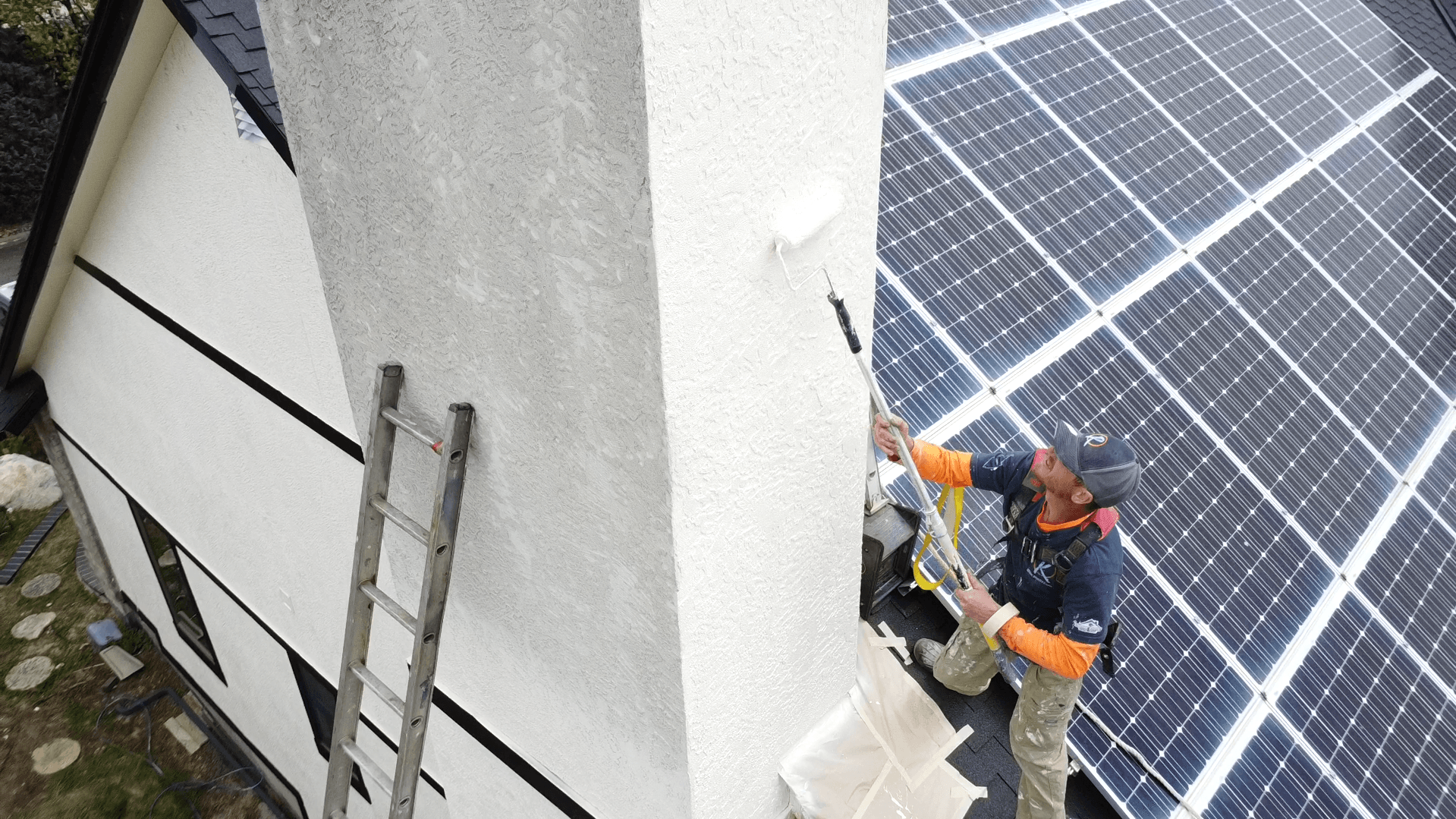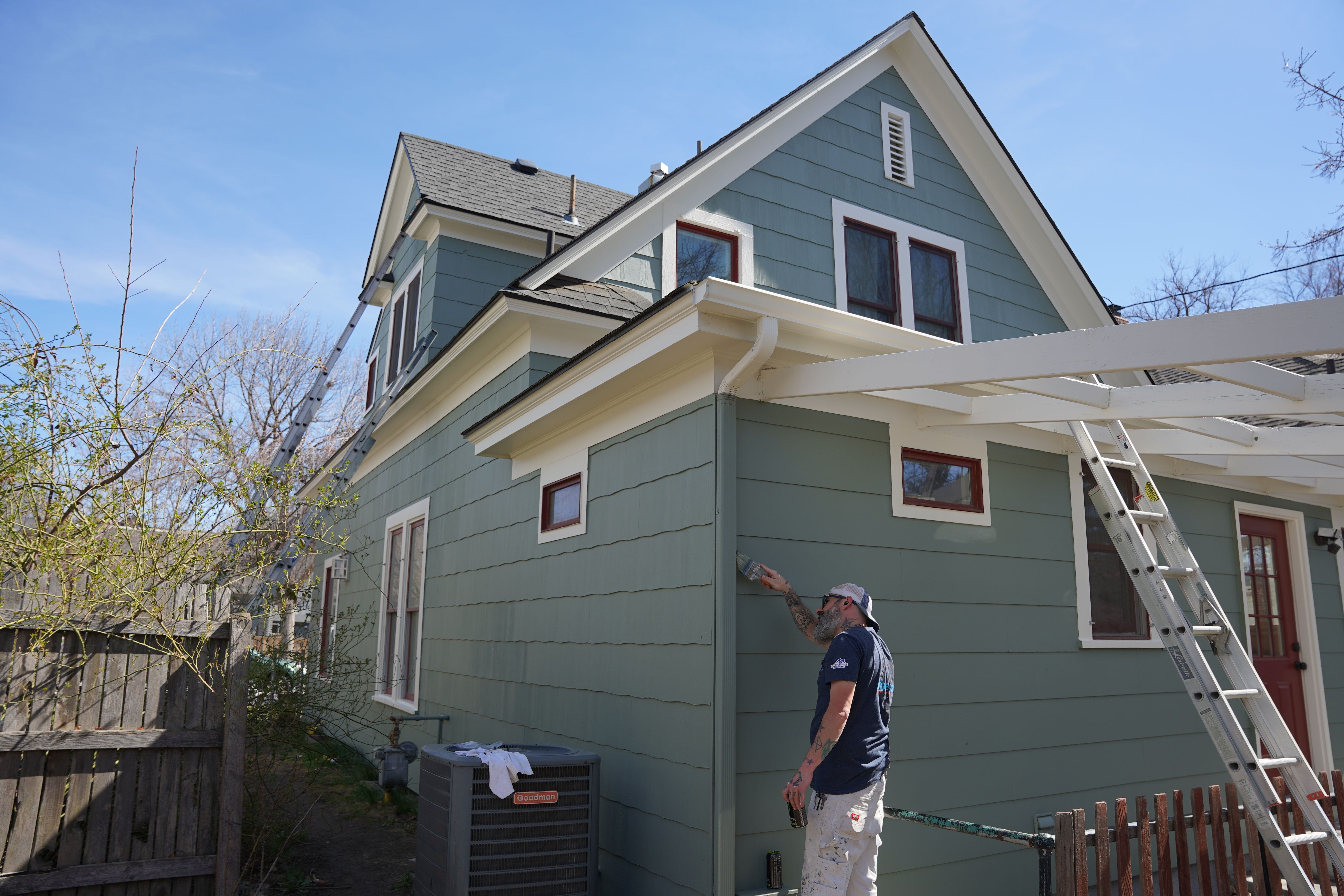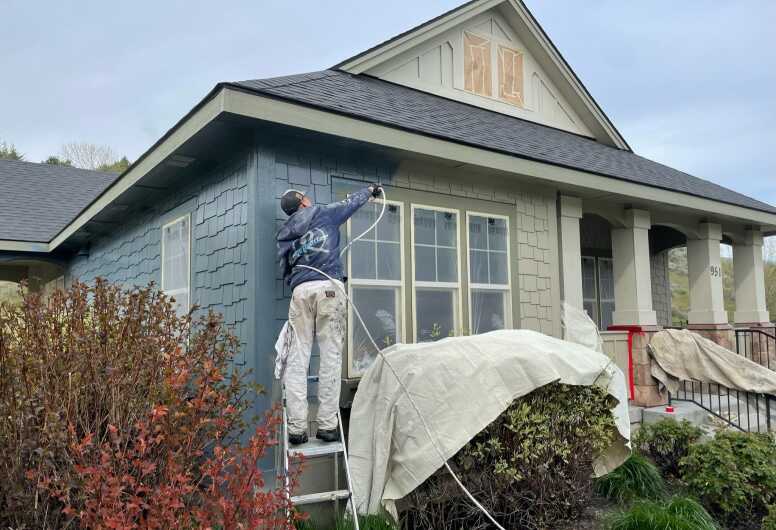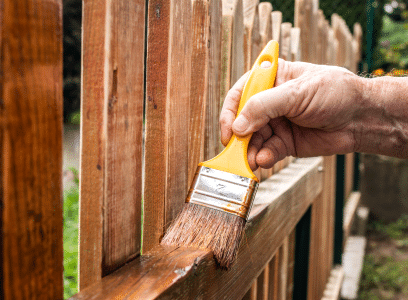
Choosing between paint and stain for your home's exterior can feel overwhelming. Maybe your deck's worn down, your siding looks faded, or you're tackling a new project, and you're unsure which finish will hold up best, require less upkeep, or give you the look you want.
At Roe Painting, we've helped thousands of homeowners make the right call based on surface type, climate, and long-term value. We apply both finishes every week, and we know where each works best.
In this article, we'll break down the real differences between paint and stain, including durability, maintenance, cost, and when to use each. By the end, you'll know exactly which option is right for your home.
What's the Difference Between Paint and Stain?
Paint and stain protect your exterior surfaces in very different ways, and those differences impact both appearance and performance.
Paint creates a solid film that sits on top of the surface. It hides the material beneath completely, offers the widest range of colors, and gives you a uniform, opaque finish. Stain, on the other hand, soaks into the material. It enhances the natural texture and grain of wood and typically comes in transparent, semi-transparent, or solid varieties.
If you want a crisp, uniform look (especially on siding or trim) paint gives you full coverage and color control. If you prefer a more natural, rustic appearance that highlights the wood underneath, stain is the way to go. Stain only works on natural wood products that absorb the material and have colors or texture you want to accentuate. You would never use a stain on engineered (man made) surfaces.
Another key difference: paint is more prone to chipping and peeling over time, especially on high-traffic areas like decks. Stains tend to fade gradually, which makes it easier to refresh without major prep work.
Feature |
Paint |
Stain |
|
Surface Coverage |
Creates a film that sits on top of the surface |
Penetrates into the material |
|
Appearance |
Opaque, full coverage; hides natural colors and texture |
Enhances natural grain; semi-transparent or solid options available |
|
Color Options |
Wide range, customizable |
More limited, earth-tone leaning |
|
Application Needs |
Requires priming, caulking, and careful prep |
Requires a clean surface; less prep intensive |
|
Failure Mode |
Chips, cracks, or peels over time |
Fades gradually; easier to refresh |
|
Ease of Recoating |
Requires scraping and sanding before reapplying |
Clean and recoat–no major prep needed |
|
Typical Lifespan |
7-10 years on siding and trim (with proper prep) |
3-8 years, depending on type and exposure |
|
Best Surfaces |
Siding, trim, and doors |
Decks, fences, logs, natural or rough-cut wood |
Durability & Longevity of Paint vs. Stain
If you're investing time and money into your home's exterior, you want to know how long that finish will actually last. Paint and stain both offer protection, but they age differently depending on the surface and environment.
How Long Does Exterior Paint Last?
On average, exterior paint lasts 7-10 years on vertical surfaces like siding, assuming proper surface prep and high-quality products were used. However, it's more likely to chip or peel over time, especially if the surface wasn't cleaned or primed correctly.
- Holds up well to UV rays and moisture
- Can crack or blister with extreme temperature swings
- Requires full scraping and repainting once it fails
How Long Does Exterior Stain Last?
Stain typically lasts 3-8 years, depending on whether it's transparent, semi-transparent, or solid. Transparent stains fade faster but are easier to recoat without stripping. Solid stains offer more color and coverage but still soak into the wood, helping prevent peeling.
- Fades gradually instead of peeling
- Easier to touch up or refresh
- Better for surfaces that expand and contract (like decks and fences)
Climate plays a big role. In a dry, sunny climate, paint may outperform stain due to stronger UV resistance. In wet or variable regions, stain may win out by flexing with wood movement and allowing moisture to escape.
Maintenance Needs Over Time
Stains are generally easier to maintain, but paint may buy you more time between major updates, depending on the surface.
Once your finish is applied, upkeep becomes the long-term reality. Understanding what each option requires can save you frustration— and money —later.
Paint Maintenance
- Touch-ups can be tricky. Matching color and sheen (especially after fading) is often difficult.
- When it fails, it fails big. You'll need to scrape, sand, prime, and repaint areas where chipping or peeling occurs.
- Long intervals between repaints. With good prep and quality paint, you might go 7-10 years before needing a full refresh.
Stain Maintenance
- Easier to reapply. No scraping. Just a clean surface and a new coat.
- More frequent upkeep, especially for transparent stains. You may need to recoat every 2-5 years.
- Forgiving finish. Because it fades gradually, touch-ups blend more easily with the original application.
Cost Breakdown: Paint vs. Stain
While stain often costs less upfront, paint may stretch your dollar longer, depending on the surface and your long-term plans.
Let's break down the costs in categories to help you compare.
Material Costs
- Paint: Higher price per gallon, especially for premium exterior-grade formulas.
- Stain: Typically less expensive. Transparent and semi-transparent options use less pigment and binder.
Example: A high-end exterior paint might cost $50-$70 per gallon, while a quality stain might range from $30-$40 per gallon.
Labor Costs
-
Paint: More prep is usually required: caulking, priming, and extra coats. Labor costs are higher as a result.
- Stain: Lower cost now, but may require more frequent maintenance, especially in high sun or wet areas.
When to Use Paint vs. Stain by Surface Type
The right finish often depends on what you're covering, not just the look you prefer. Here's a breakdown of which option works best for common exterior surfaces:
Siding (Wood or Fiber Cement)
Best Option: Paint
Paint offers better protection against moisture and UV damage, providing full color coverage. It also seals small surface cracks more effectively, making it ideal for older or rough-textured siding.
Decks and Railings
Best Option: Stain
The stain penetrates the wood, allowing it to breathe and helping prevent peeling as the surface expands and contracts. It's also easier to refresh, which matters in high-traffic areas.
Fences
Best Option: Stain (semi-transparent or solid)
Fences benefit from stain's quick application and ability to age gracefully. It enhances the wood's natural look and doesn't require sanding between applications.
Trim and Fascia
Best Option: Paint
These areas often require a polished, uniform look to match or contrast with the siding. Paint gives sharper color definition and holds up well with the right prep.
Pros & Cons: Paint vs. Stain
Not every home—and not every surface—benefits from the same finish. Here's a quick way to weigh the strengths and weaknesses of each.
Paint |
Stain |
|
|
Pros |
-Long-lasting color and surface protection -Excellent UV resistance -Hides imperfections well -Broad color selection |
-Enhances natural wood texture -Easier to apply and recoat -Fades rather than peels -Generally lower material cost |
|
Cons |
-Can chip, peel, or crack over time -Requires more prep work -Harder to touch up -More difficult to switch finishes |
-Shorter lifespan on high-traffic surfaces -Fewer color options -Requires more frequent upkeep -Doesn’t hide surface flaws well |
Making the Right Choice for Your Exterior
Now you can see how paint and stain differ in application, maintenance, cost, and appearance, and how those factors apply to your home's unique surfaces.
Choosing the wrong finish can lead to early failure, frustrating upkeep, or results that simply don't match your vision. That's why it's so important to understand both the look and the long-term impact before making a decision.
If you're still unsure about which option fits your siding, deck, or fencing best, your next move is to connect with our team. We'll evaluate your surfaces, environment, and goals to recommend the right finish during a complimentary consultation.
At Roe Painting, we help home and business owners make informed, confident decisions about every surface we touch. Whether you go with paint or stain, you deserve results that last and look great doing it.
ssdflkj
bkjhjhk
Jud has been with Roe Painting since 2017 and in the painting industry as a whole since 1999. He has a passion for estimating and selling a wide variety of painting projects. As the son of two teachers, he loves to educate his customers on what they should expect in a proper paint job. As VP of Sales, he enjoys developing estimating programs and teaching and coaching his sales team to deliver a confident contracting experience for every customer.
Topics:


